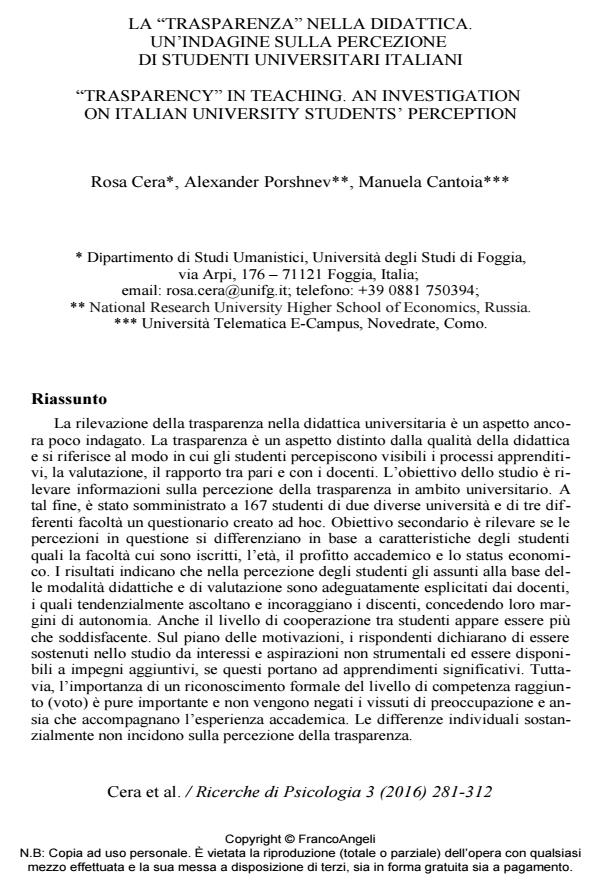"Trasparency" in teaching. An investigation on italian university students' perception
Journal title RICERCHE DI PSICOLOGIA
Author/s Rosa Cera, Alexander Porshnev, Manuela Cantoia
Publishing Year 2016 Issue 2016/3
Language Italian Pages 32 P. 281-312 File size 282 KB
DOI 10.3280/RIP2016-003002
DOI is like a bar code for intellectual property: to have more infomation
click here
Below, you can see the article first page
If you want to buy this article in PDF format, you can do it, following the instructions to buy download credits

FrancoAngeli is member of Publishers International Linking Association, Inc (PILA), a not-for-profit association which run the CrossRef service enabling links to and from online scholarly content.
Transparency in the academic context is a neglected research topic as yet. Transparency is distinct from quality of teaching and concerns the extent to which students perceive learning and evaluation processes, as well as interactions with peers and teachers, as visible. The study was aimed at investigating such issues through a questionnaire which was administered to a sample of 167 undergraduates attending three faculties in two universities. A further purpose was to test weather students’ perceptions are affected by the attended faculty, the age, the level of academic achievement and the economic status of the respondents. Results showed that according to students the assumptions underlying teaching and evaluation procedures are made adequately explicit by teachers, who listen to and encourage learners and allow them to be autonomous. The level of cooperation between peers and between students and teachers is perceived as satisfactory. It appears that students are motivated by intrinsic interests and accept supplementary study charges if they are addressed to meaningful goals, even though also grades are conceived as important and negative feelings about the academic experience were reported. Students’ perception of trasparency is not affected by individual differences.
Keywords: Transparency, academic teaching, student-teacher relationship, cooperative learning, self-regulated learning, motivation
Rosa Cera, Alexander Porshnev, Manuela Cantoia, La "trasparenza" nella didattica. Un’indagine sulla percezione di studenti universitari italiani in "RICERCHE DI PSICOLOGIA " 3/2016, pp 281-312, DOI: 10.3280/RIP2016-003002